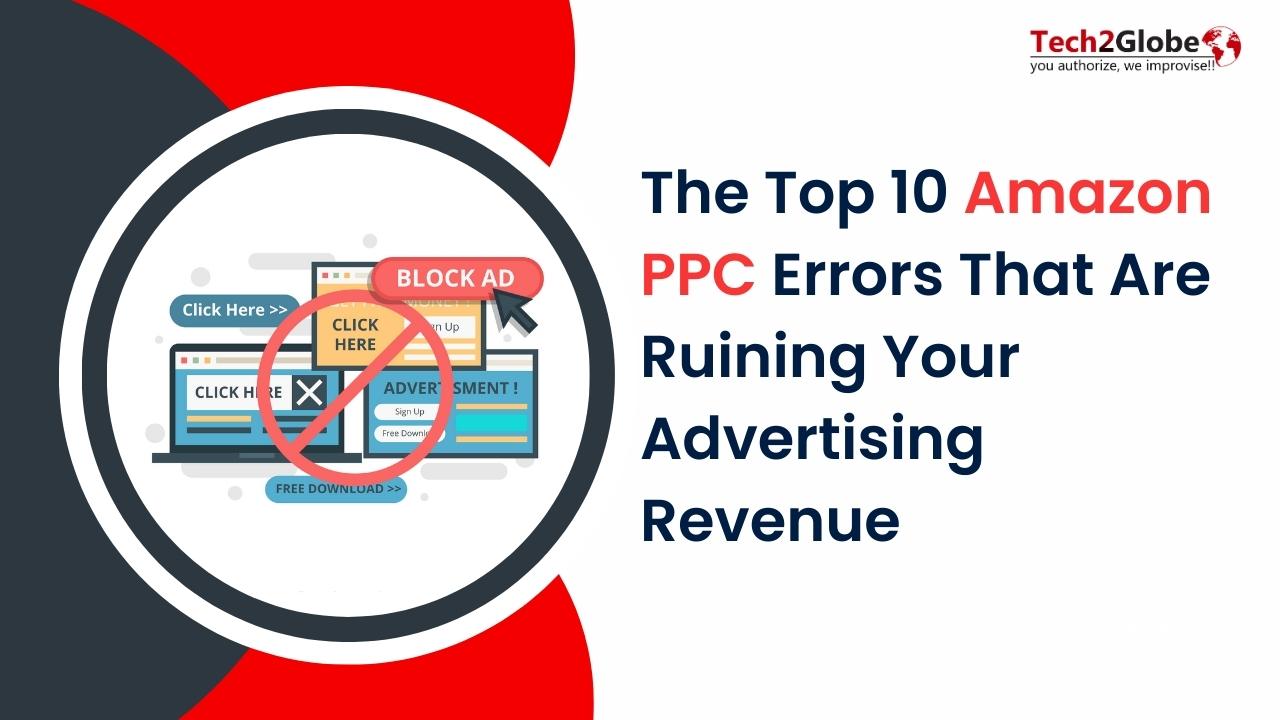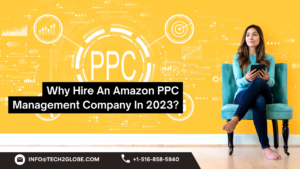PPC may prove to be your most costly or most successful sales channel. In this blog, we’ll let you know a few of the more frequent mistakes that being a seller you might make while creating, managing, and optimising your Amazon advertising campaigns.
After months of planning, optimising, bidding, and then improving some more, how are your PPC KPIs looking now? Do you find the results disappointing? Managing lucrative PPC advertising is a recurring issue for the majority of vendors. It could seem tough to grow sales and keep a profit.
If your PPC results aren’t what you expected, take a look at the basic PPC mistakes that most retailers commit. These amateurish flaws distinguish between high-performing and high-ACOS PPC advertising.
1. Creating A Global PPC Strategy

Before the campaign begins, specify the precise goal you want it to achieve. Making judgments about the campaign’s keywords, campaign optimisation, and performance assessment will be easier if you have an objective in mind beforehand.
Some of the most relevant campaign objectives are:
- Maximising per-product profitability will increase sales (this is most prevalent).
- Create demand for the product and increase its visibility to support initial sales.
- Creating targeted ads with terms associated with the brand to raise brand awareness.
- Increase sales velocity by placing competitive bids on a product’s root keywords to improve organic ranking.
- Creating sales campaigns to get rid of unsold goods in FBA warehouses is known as liquidation.
2. Underestimating The Value Of Keyword Research

Avoiding keywords, an essential component of every PPC campaign, could make your advertising less effective. PPC newbies typically assume they are familiar with the most important keywords for their products, but this strategy has flaws. Utilise all of your available keyword selections. Your keyword list must contain root keywords, synonyms, general keywords, and general category keywords.
3. Steer Clear Of Choosing Keywords Based On Match Kinds
There are three kinds of keyword matches that you should know:
- Broad: Your advertisement will show up if the customer’s search term contains all of the keywords—in any order. This also includes similar variations like accents, plurals, and abbreviations.
- Phrase: Less permissive than phrase match type is broad match type. Your advertisements will appear if the client’s search terms include the exact phrase or set of phrases.
- Exact: When employing exact-match keywords, the customer search phrase must exactly match the keyword and its meaning. When you pick the precise match type, your advertisements will be seen by the customers who are most likely to buy our goods. Broad match is typically used to increase traffic and your audience, whereas exact and term match is used when you have budget restrictions. There is less chance of focusing on uninterested audiences when utilising certain types of keyword matching. Setting match types instructs Amazon’s computer how to match your adverts to users’ search terms.
4. Expanding The Net
Advertising professionals make the mistake of concentrating only on broad, generic terms, which can have an outrageously large search traffic. When you only target the general words, you are spending more for your advertising to be seen by individuals who aren’t even remotely interested in buying your goods. Instead, concentrate on specialised keywords related to your service. The more targeted your keywords are, the lower your ACOS will be.
5. Quality Of Detail Pages Is Neglected

You close the sale on your detail page. Even if every aspect of your PPC campaign is perfect, if you aren’t creating a strong listing, you are wasting your money. If shoppers come on a basic version of your listing after clicking on your advertisement, they won’t buy from you. Customers are more likely to make a purchase when a product’s detail page is strong, includes thorough language, in-stock label, and at least 15 positive reviews.
Examine Your Detail Page More Closely To See If It Has The Following:
- The title has all the necessary information, there are five useful bullets, and the description is well written. The content is accurate and descriptive (A+).
- Photos of a high standard, including a primary image with a white background, infographic images, and lifestyle photographs
- 15+ verified reviews with a minimum star rating of 3.5
- Buy boxes are available
- Stock accessibility
6. Excluding The Pejorative Terms
Negative keywords keep your ad from appearing in the SERPs. Long-term cost savings are possible when using negative keywords. You can ensure that only people who are actively looking for your products will click on your advertisements by generating a list of negative keywords. The non-converting keywords from the marketing campaign may also be considered negative keywords. By removing some terms, you can increase advertising revenue without reducing visibility.
7. Either Manually Or Automatically Create Campaigns, But Not Both
Advertising that is both automatic and manual must be included in a PPC strategy. By combining automatic and manual campaigns, you may collect full statistics and keep total control over your advertising budget. Utilising Amazon’s data can help your business. Find profitable keywords from your automatic ads and use them as the focus of your manual marketing to boost sales. Find the non-converting keywords from your regular advertising and remove them from your manual efforts to increase profitability.
8. Establishing And Excluding
You don’t have to spend the entire day staring at the advertising dashboard. Just check in once day to work on your ads. Because a lot may happen in a single day, daily check-ins help you keep track of campaign advancements.
Every day, you must carry out the following tasks:
- Download the search term report and make a note of the profitable and unsuccessful keywords.
- Increase bids on profitable keywords.
- Add all irrelevant keywords to the list of “negative keywords.”
- Look over each campaign’s budget.
- Examine your key performance indicators, such as clicks, click-through rates, cost per click, sales, and ACOS.
- Keep an eye out for substantial cost spikes.
9. Not Having Enough Patience
It is unrealistic to launch a PPC campaign and then anticipate overnight financial success. Give your campaigns ample time to gather sufficient data that you can use. Let your recently launched campaigns run for at least seven days before making any changes. Any adjustments made before this point were founded on unreliable and insufficient data.
10. Undue Reliance On Paid Sales
Sellers that are focused on long-term growth are aware that marketing should have a snowball effect, eventually improving organic growth and increasing brand awareness. One method to assess how successfully your PPC advertisements are assisting in the overall expansion of your business is to check your TACoS (total advertising cost of sales). Metrics like ACoS and RoAS can be used to gauge the impact of your adverts, but Amazon TACoS offers information on the overall success of the business.
Conclusion
It’s clear when your PPC campaigns don’t match the KPIs you planned. Finding the exact root of a problem, however, is not always easy. Amazon PPC consultants will be able to considerably enhance your PPC sales and earnings by being aware of these common mistakes and being ready to avoid them. Even though PPC can be challenging to understand, avoiding these common mistakes can set you on a fast track to advertising success. Tech2Globe Amazon PPC consulting can also help you in this case.










